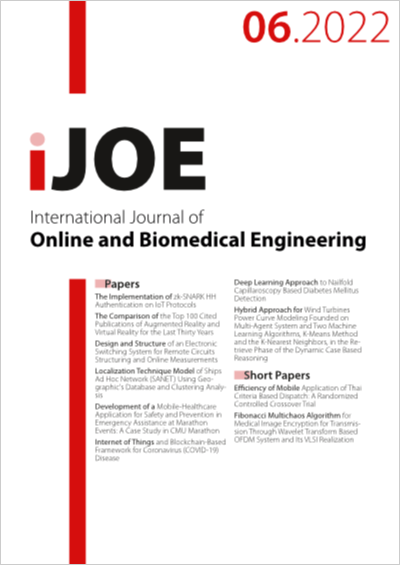The Implementation of zk-SNARK HH Authentication on IoT Protocols
DOI:
https://doi.org/10.3991/ijoe.v18i06.28893Keywords:
Authentication, IoT, zk-SNARKs, MQTT, CoAP, Homomorphic HidingAbstract
CoAP and MQTT are messaging protocols in the application layer of the Internet of Things (IoT) architecture. Both protocols, in general, have not been equipped with certain authentication schemes to cope with the network security gap. Without an authentication mechanism, the protocol is prone to mand-in-the middle attacks. Addressing this issue, the present study attempted to implement an authentication scheme using zk-SNARK Homomorphic Hiding (HH). This authentication mechanism does not require a token exchange and is safe from an eavesdropper. In this study, zk-SNARK HH was implemented to CoAP and MQTT protocols. The performance of both protocols was compared. The result of the study indicates that zk-SNARK was successfully implemented in CoAP and MQTT protocols. The result of the independent sample t-test presented a significant difference in COAP and MQTT memory usage where MQTT required larger memory. Regarding time execution, no significant difference was noticed. To conclude, CoAP may serve as an alternative when zk-SNARK is implemented in a device with limited memory as it requires lower memory and has an execution time that is not significantly different from MQTT.
Downloads
Published
How to Cite
Issue
Section
License
Copyright (c) 2022 Ari Kusyanti, Nurudin Santoso, Puspita Ainunnazahah, Luthfi Maulana

This work is licensed under a Creative Commons Attribution 4.0 International License.


